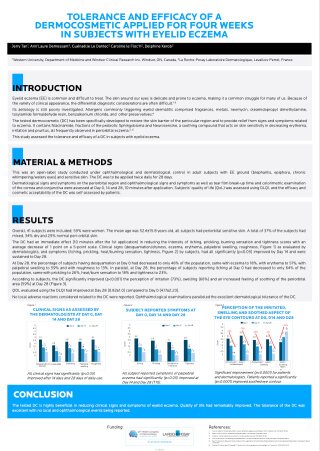
INTRODUCTION
Eyelid eczema (EE) is common and difficult to treat. The skin around our eyes is delicate and prone to eczema, making it a common struggle for many of us. Because of the variety of clinical appearance, the differential diagnostic considerations are often difficult.
1-3
Its aetiology is still poorly investigated. Allergens commonly triggering eyelid dermatitis comprised fragrances, metals, neomycin, oleamidopropyl dimethylamine, tosylamide formaldehyde resin, benzalkonium chloride, and other preservatives.
4
The tested dermocosmetic (DC) has been specifically developed to restore the skin barrier of the periocular region and to provide relief from signs and symptoms related to eczema. It contains Niacinamide, fractions of the probiotic Sphingobioma and Neurosensine, a soothing compound that acts on skin sensitivity in decreasing erythema, irritation and pruritus, all frequently observed in periorbital eczema.
5,6
This study assessed the tolerance and efficacy of a DC in subjects with eyelid eczema.









